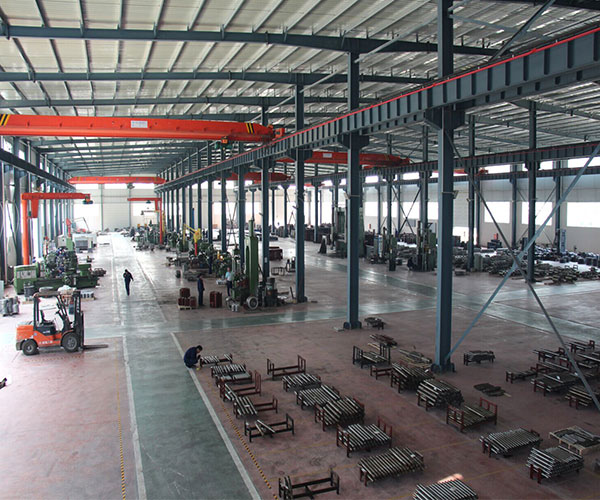The Effect of High Altitude on Explosion-Proof Motors: What You Should know
Explosion-proof motors play a crucial role in industries where hazardous conditions, such as the presence of flammable gases, vapors, or dust, make the risk of explosion a real concern. These motors are designed to prevent any internal sparks, heat, or electrical discharges from igniting surrounding hazardous substances. Industries such as oil and gas, mining, and chemical processing rely heavily on explosion-proof motors to ensure safety and reliability in volatile environments. However, when these motors are used at high altitudes, they face unique challenges that can affect their performance, safety, and lifespan.
At higher altitudes, several enviental factors come into play that can directly impact the efficiency and operation of explosion-proof motors. Reduced air density, lower oxygen levels, temperature fluctuations, and extreme weather conditions all contribute to the challenges these motors must overcome to function effectively in elevated locations.
One of the most noticeable effects of high altitude on explosion-proof motors is the decrease in air density. As the altitude increases, the air becomes thinner, meaning there are fewer air molecules to help cool the motor. This reduced air density significantly impacts the cooling efficiency of the motor’s cooling system, especially for air-cooled motors. With less air available to carry away heat, the motor may struggle to dissipate the heat generated during normal operation. As a result, the motor may overheat, which can lead to insulation failure, damage to components, or even a complete breakdown in extreme cases.
To mitigate this risk, motors operating at high altitudes often require enhanced cooling solutions. Liquid-cooling systems, which are not as dependent on ambient air conditions, can be a more effective alternative for maintaining optimal motor temperatures. Larger ventilation fans or forced-air systems may also be necessary to boost airflow and improve cooling. In some instances, derating—operating the motor at a lower capacity—can also help prevent overheating and ensure the motor operates within its safe temperature limits.
In addition to cooling challenges, lower oxygen levels at high altitudes can affect the performance of explosion-proof motors. Although these motors don’t rely on oxygen for operation, the reduced atmospheric pressure and thinner air can still impact their efficiency. The thinner air means that the motor may not be able to operate at its maximum performance level, which can result in decreased torque, slower speeds, and reduced overall power output. While this performance decline might not be a significant issue for smaller motors or those under light loads, it can be more pronounced in heavy-duty industrial applications that require consistent, high power.
These performance issues are compounded by extreme temperature fluctuations often experienced in high-altitude regions. Day-to-night temperature differences can be drastic, leading to rapid thermal expansion and contraction of the motor’s internal components. This repeated stress can cause wear and tear on critical motor parts, such as bearings, windings, and seals. Over time, this can reduce the lifespan of the motor and increase the likelihood of mechanical failure.
Moreover, high-altitude environments are often subject to harsh weather conditions, such as heavy winds, rain, and snow. These conditions can expose the motor to moisture, which, if not properly sealed, can lead to corrosion and rusting of internal components. This corrosion can weaken the motor, impair its functionality, and increase the risk of malfunction, especially in explosion-proof motors where maintaining integrity is crucial for safety.
To address these issues, explosion-proof motors operating at high altitudes should be equipped with robust weather-resistant enclosures and corrosion-resistant materials. Seals and gaskets must be designed to prevent moisture from entering the motor, ensuring that the internal components remain protected from environmental damage. Special materials that can withstand the repeated expansion and contraction caused by temperature fluctuations should also be used to ensure the motor’s durability and continued safe operation.
The challenges posed by high altitudes often require derating of explosion-proof motors. Derating involves reducing the motor’s rated capacity to prevent overheating and ensure it operates within safe limits. At altitudes above 1,000 meters (3,280 feet), it is common to derate motors by approximately 1% for every 100 meters (328 feet) of altitude. For example, at 2,000 meters (6,561 feet), a motor would be derated by about 20%. This adjustment helps account for the reduced cooling efficiency and allows the motor to function safely in high-altitude environments.
Selecting the right motor for high-altitude use is also crucial. Motors that are specifically designed for such conditions often feature advanced cooling systems, durable weatherproof enclosures, and corrosion-resistant components. These motors are built to handle the environmental stresses of high-altitude locations, ensuring reliable and safe operation even in the most challenging conditions.
Ultimately, the key to ensuring that explosion-proof motors operate safely and efficiently at high altitudes lies in understanding the unique challenges these environments present and taking appropriate steps to address them. By enhancing cooling systems, protecting against moisture, and derating the motors as needed, industries can ensure that their explosion-proof motors continue to provide the safety and reliability required for hazardous environments. With careful planning and the right motor design, companies can ensure that their operations remain secure and efficient, even in high-altitude settings.
Post time: Apr-01-2025


